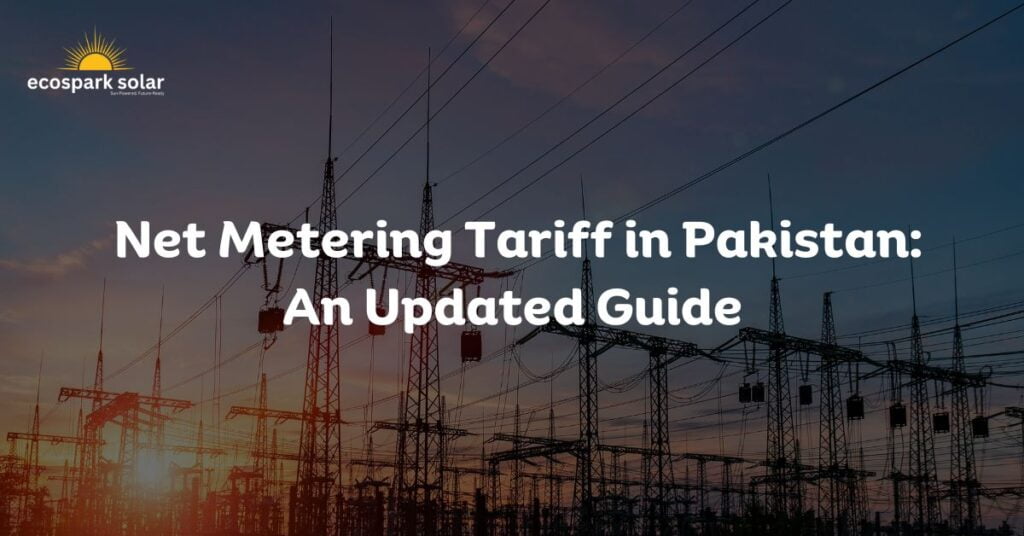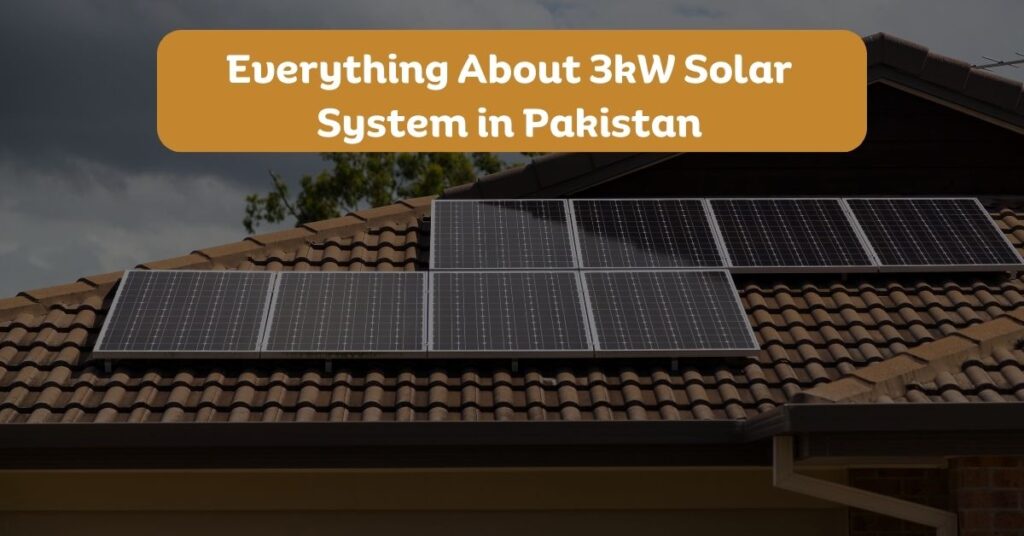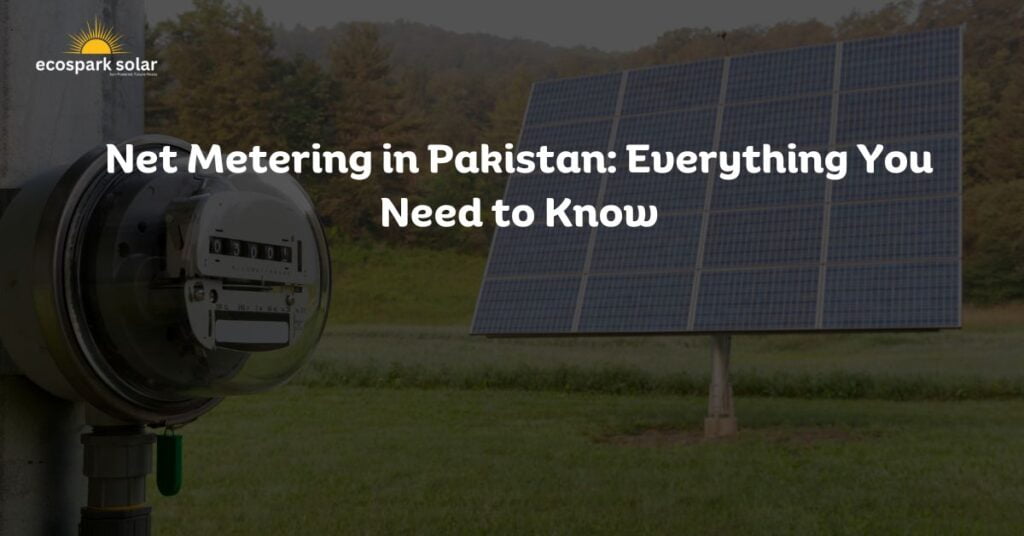“Brother, install a solar system, get a green meter, and you will save on your electricity bills.” You may have heard this advice. As more individuals consider adopting this green energy solution, the question of net metering tariffs in Pakistan becomes crucial to understanding the financial implications and benefits of this innovative approach.
Stay with us, as in this article, we will take a closer look at how net metering tariff works in Pakistan. To be specific, we will discuss the following:
- What is the electricity tariff, and how does it differ from the electricity rate?
- A brief explanation of net metering in the context of Pakistan
- Net metering tariff in Pakistan
- How are you compensated for net metering?
- Impact of net metering on consumers
- How does net metering affect the payback period of solar systems in Pakistan?
What is Electricity Tariff—Or Net Metering Tariff?
An electricity tariff is the pricing structure or rate schedule set by utility companies or government regulators to charge consumers for the electricity they use. It outlines the specific charges associated with consuming electricity based on factors like consumption levels, time of use, customer category, and the notorious fuel adjustment charges (FPA). The tariff encompasses the overall pricing structure, while the rate refers to the cost per unit of electricity consumed, determining how much consumers are billed based on their electricity usage. In Pakistan, the National Electric Power Regulatory Authority (NEPRA) sets the electricity tariff.
Net metering tariff refers to the rates at which electricity is bought from and sold back to the grid. These rates directly impact the potential savings, payback periods, and overall return on investment for consumers who choose to adopt net metering. The net metering tariff is also set by the NEPRA.
In the context of net metering compensation, the rate (tariff) at which the National Electric Power Regulatory Authority (NEPRA) charges consumers is often lower than the rate at which they buy the electricity back from solar system owners. We will discuss more in the sections below.
May 2024 Update: Before discussing net metering rates and tariffs, let’s talk about something we are often asked about these days. One, is the government ending the net metering program? The answer is no. While the government did consider the plan to reduce payouts to consumers, the plan was cancelled. The Federal Minister for Energy Awais Ahmad Khan Leghari himself confirmed here that the government had no plans to end the policy of solar net-metering.
March 2025 Update: The Government reduced the tariff for solar consumers in March 2025. Details below, please.
Another thing that we are asked is gross-metering. Gross metering means that all your electricity will first be fed to the grid, and from there, you will be given electricity. This is different from net metering in the sense that in net metering, you first consume your own electricity, and you send only that electricity to the grid that is extra. So far, there is no gross-metering in Pakistan. Be happy, at least for now! Now, let’s move to the main topic.
Net Metering in the Context of Pakistan
Net metering is a system that allows consumers in Pakistan to generate their own electricity using renewable energy sources like solar panels and share any excess power with the national grid. It enables individuals and businesses to become both energy consumers and producers, fostering a more sustainable energy landscape.
In Pakistan, the implementation of net metering is overseen by the country’s power regulatory authority, the National Electric Power Regulatory Authority (NEPRA). NEPRA plays a crucial role in formulating and implementing policies related to net metering to ensure its smooth functioning and widespread adoption.
Net metering in Pakistan is governed by NEPRA’s Net Metering Regulations of 2015, which outline the guidelines and procedures for consumers interested in installing renewable energy systems and connecting them to the grid. Under the net metering policy, the qualification criteria for net metering in Pakistan are the following:
- Your solar system size is between 1kW and 1MW
- You have a 3-phase connection
- You own the solar system
- You have installed the system through a certified solar installer
- You are registered with an electricity distribution company (DISCO), such as IESCO, PESCO, LESCO, etc.
Any surplus energy produced by your system is fed back into the grid, and consumers receive credits or compensation for the excess electricity they contribute.
The net metering policy in Pakistan provides an opportunity for individuals and businesses to reduce their reliance on traditional electricity sources and contribute to a cleaner, more sustainable energy future.
You May Like to Read: Solar System Price in Pakistan
What are the Net Metering Rates (Tariff) in Pakistan?
Currently, the net metering tariff stands at Rs. 10 per kilowatt-hour (kWh), which governs the buying and selling of electricity between consumers and the National Electric Power Regulatory Authority (NEPRA). Earlier, this used to be Rs. 19/unit. But in March 2025, the government revised the policy, which per the policymakers, would lift the burden off non-solar consumers. Read more about the changes in this Dawn news of the day.
In the context of net metering, it is important to understand the distinction between off-peak and peak rates. Off-peak rates refer to the lower-priced electricity rates applicable during specific periods when the electricity demand is comparatively lower, typically during late evening or early morning. On the other hand, peak rates correspond to higher-priced electricity charged during periods of high electricity demand, usually during the 5 pm – 10 pm slots.
September 2023 Update: The NEPRA wanted to lower the net metering tariff for solar system owners. However, thankfully, they dropped their plan, as the Minister of Energy himself confirmed that ‘solar net metering rates won’t be decreased’. So, congratulations, everyone! (This update no longer applies, as the government has reduced the tariff in March 2025. I take my note of congratulations back! But nevertheless, you will still save a lot on your electricity bill with net metering.)
The NEPRA buys back electricity at off-peak rates. And rightly so. Solar power systems generate electricity only during the off-peak hours, while most of our consumption is during the peak hours, usually between 5 pm to 10 pm. Note that the peak hours may vary from season to season.
You May Like to Read: A Guide to Solar Financing Options in Pakistan
A solar system for everyone.
We’re customer-centric; we will find you a solution within your budget. Whatever your project size, you can always save with Ecospark Solar.
An illustration would help.
Let’s consider a scenario where a household having a 5kW solar system generates 600 kWh of electricity per month. Out of these 600, they consume 200 units while exporting the rest to the grid. Since this is generated and consumed during the off-peak hours, the rates applicable would be off-peak electricity.
At the same time, you also import electricity from WAPDA. For instance, in the morning, when the sun is not yet shining. Suppose that electricity is 80 units.
Electricity generated = 600 units
Electricity sent to the grid = 400 units
Electricity imported from the grid; 80 units
Net Price: electricity imported from the grid – electricity sent to the grid
| Net Off-Peak Hours Bill: 80 x 10 – 400 x 10 = 800 – 4,000 = Rs. –3,200 |
This is the off-peak bill.
Now, at night, solar systems do not generate electricity, so all electricity that is consumed at home is from the grid (WPADA). And that is sold at peak hours, which have higher rates. Suppose you consume 200 units, and the rate is Rs. 25/kWh.
Energy sent to the grid = 0 units
Energy consumed = 200 units
| Net Peak Hours Bill: 200 x 20 = Rs. 4,000 |
Total Monthly Bill: Peak Net Price – Off-Peak Net Price
| So, the total monthly bill will be 4,000 – 3,200 = Rs. 800 |
It means that the grid would pay only Rs. 800 for 480 units a month.
Disclaimer: Please note that the prices and electricity consumption here may not be real, and it is only to help you understand how the net metering mechanism works. As we have seen, in some locations, a 5kW system can generate more monthly units than mentioned, most of which are sent to the grid. Some households whose electricity consumption is lower would receive a negative bill. On the other hand, some will have to pay their bills if their consumption is higher. To get an accurate picture, we will have to take into account your total monthly consumption, system size, peak and off-peak rates, and the generally applicable electricity rates during that season, etc. Also, the government increased electricity prices in August 2023, so adjust your off-peak and peak hours likewise.
Also, if you want to know how we calculate the power output of a typical solar system, explore our guide to calculating how much power a single solar panel produces in Pakistan. Based on that, you can calculate the size of your system and the potential savings through net metering.
You Generated More Electricity. What’s Next, Then?
When consumers generate more electricity through their net metering system than they consume, an exciting opportunity arises in energy credits. In Pakistan’s net metering program, these credits are typically rolled forward for a period of three months.
If you generate more, the credit will be rolled forward to the next month. It means that if you consume more than you produce the next month, your energy credits will be adjusted against the previous month’s credits. But you have two options if you produce more for three consecutive months.
- One. You can choose to be paid for the excess energy you have contributed to the grid. In such cases, the energy credits are converted into monetary compensation at the prevailing net metering rate. This provides a tangible benefit for consumers, offering a financial return on their renewable energy investment.
- Two. You can decide to further roll forward your energy credits for an extended period. This option is beneficial for those who anticipate future high energy consumption or prefer to maximize their contribution to the grid over an extended timeframe. By continuing to roll forward their energy credits, consumers maintain the opportunity to offset future electricity bills or receive compensation when they ultimately decide to redeem their credits.

Impact of Net Metering Rates on Consumers
The net metering rates in Pakistan significantly impact consumers, influencing the financial viability, return on investment, and payback period associated with adopting net metering.
Return on Investment (ROI)
Net metering rates directly affect the return on investment for consumers who invest in renewable energy systems such as solar panels. The higher the net metering rate, the greater the financial returns for consumers. A favorable net metering rate allows consumers to offset their electricity bills more effectively, potentially leading to a shorter payback period and higher savings over the lifespan of their solar installation.
Payback Period
The solar payback period refers to the time it takes for the savings from a net metering system to equal or surpass the initial investment cost. Net metering rates directly impact the payback period, with higher rates leading to a shorter payback period. A shorter payback period makes the investment in renewable energy systems more attractive to consumers, as they can start realizing significant savings sooner.
In Pakistan, thanks to the existing net metering policy, the payback period of solar systems ranges between 4 to 7 years, depending upon the system size, energy consumption, location, and the prevailing electricity rates.
Net Metering Cost in Pakistan
Net metering cost means the price a consumer has to pay for availing net metering services. It includes the price of the meter, government fees, documentation fees, and any other costs associated with net metering. Usually, companies charge around PKR 100,000 for complete net metering services. It doesn’t include any costs associated with increasing your sanctioned load, meter phase change, etc.
Net Metering Tariff in Pakistan: Concluding Thoughts
Net metering in Pakistan allows households and businesses to generate their own electricity and contribute to a cleaner, more sustainable energy landscape. With the current net metering tariff set at 19.32/kWh, consumers can benefit from financial savings, a shorter payback period, and increased energy independence. While a lot needs to be done in the solar sector, the movement is what matters, and we are moving, even if they are baby steps.




👍Very informative and easy to understand.